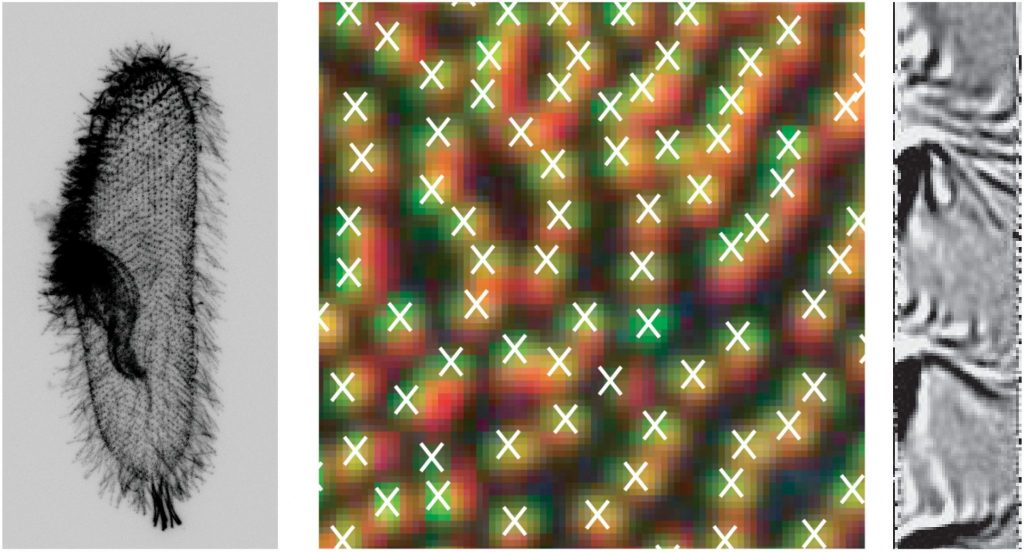
Cilia are slender organelles that beat to generate flows. They are organized in arrays with diverse numbers and spatial configurations. For example, cells such as the algae Chlamydomonas have only two cilia, while some protists such as Paramecium are covered by rows with dozens to thousands of cilia. Cilia in an array can beat in synchrony or break symmetry at the collective level by performing the same beat cycle with a phase difference with respect to their neighbors. This phase difference between neighbors leads to the appearance of traveling waves known as metachronal waves.
We are studying the diversity of spatio-temporal patterns of cilia arrays with the aim of understanding the physical and molecular mechanisms underlying their collective dynamics. Multiciliated unicellular protists, known as ciliates, provide excellent models to understand how patterning of cilia arrays determines the properties of the flow generated by it.